Digital Poster
Brain Physiology
ISMRM & ISMRT Annual Meeting & Exhibition • 10-15 May 2025 • Honolulu, Hawai'i

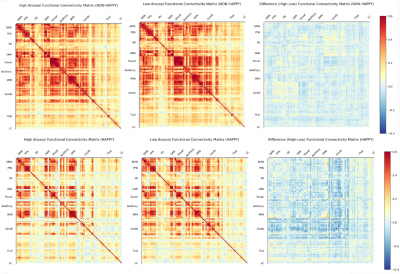 |
Computer Number: 49
3705. Effects
of Arousal Level and Data-Driven Cardiac Signal Regression on
Dynamic Functional Connectivity
E. Can, B. Öner, P. Özbay
Bogazici University, İstanbul, Turkey
Impact: This study demonstrates the importance of
tracking arousal levels during resting-state fMRI to better
understand brain connectivity dynamics. By using pupil size
as an arousal marker, the findings refine rs-fMRI analysis,
offering insights into the brain function and physiology.
|
|
 |
Computer Number: 50
3706. Fluctuation
of the human limbic functional connectivity along the time of
day
C-Y Huang, H-J Lee, W-J Kuo, F-H Lin
National Taiwan University, Taipei, Taiwan
Impact: Functional connectivity in the limbic system can
be moderately but significantly increased or decreased over
24 h, suggesting that complex coordination between the
limbic system and the cortex can change over the course of a
day.
|
|
 |
Computer Number: 51
3707. Characterize
cerebrovascular reactivity by measuring the functional
topology-informed synchronization of fMRI signals
X. Zhang, L. Li, Y. Chen, R. Xie, H. Liang, S. Lui, Y. Zhao
West China Hospital, Chengdu, China
Impact: The model-free approach characterizes
cerebrovascular reactivity by measuring changes in BOLD
signal synchronization based on functional topology with a
high spatial specificity and sensitivity, which is expected
to serve as a standardized tool to measure cerebrovascular
reactivity.
|
|
 |
Computer Number: 52
3708. The
Coupling of Cerebrovascular Activity and Cerebrospinal Fluid
Flow: A Pioneering Study at 7 T MRI
P. Lv, J. Parker, J. Cramer, I. Ikuta, Y. Zhou
Mayo Clinic, Phoenix, United States
Impact: This study will not only help us understand the
intricate relationship between blood flow and CSF dynamics
and potentially identify novel biomarkers neurodegenerative
diseases.
|
|
 |
Computer Number: 53
3709. The
neurovascular coupling mechanism in stroke-free AF patients and
its association with cardiac function and cognitive decline
s. yue, j. zhang, k. ai
Lanzhou University Second Hospital, lanzhou, China
Impact: Multimodal functional magnetic resonance imaging
for cognitive assessment provides evidence to support the
development of more effective integrated strategies for
preventing and treating atrial fibrillation-related
cognitive impairment.
|
|
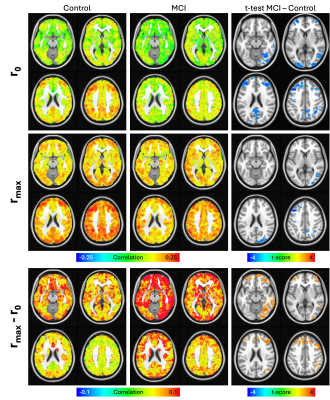 |
Computer Number: 54
3710. Neurovascular
Uncoupling in Mild Cognitive Impairment: Insights from Multiband
Multi-echo BOLD-Perfusion Imaging
A. Cohen, L. Glass Umfleet, M. Franczak, S. Banerjee, B.
Fernandez, K. Ristow, Y. Wang
Medical College of Wisconsin, Milwaukee, United States
Impact: Resting state BOLD-CBF coupling was lower in MCI
individuals compared to age and sex matched control
individuals. These results reveal a fundamental disruption
in brain-blood flow dynamics in MCI. The physiological
underpinnings of these results warrant further
investigation.
|
|
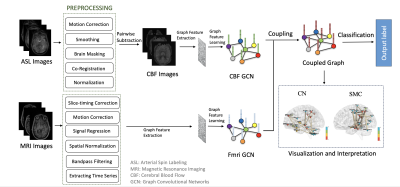 |
Computer Number: 55
3711. Graph-Based
Multimodal ASL-fMRI Coupling Analysis for Distinguishing
Significant Memory Concerns from Normal Controls
B. Xiu, M. Yu, Q. Wang, M. Liu
University of North Carolina at Chapel Hill, Chapel Hill, United States
Impact: This approach provides enhanced diagnostic
sensitivity for detecting preclinical Alzheimer's disease,
offering a valuable tool for early intervention by analyzing
combined neurovascular and functional connectivity through
ASL-fMRI integration.
|
|
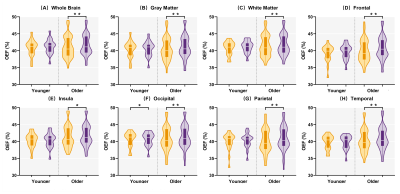 |
Computer Number: 56
3712. A
comparison of OEF mapping in aging by using different arterial
spin labeling method based on QSM+qBOLD
X. Liu, Y. Yin, Y. Shan, B. Xu, J. Lu
Xuanwu Hospital, Capital Medical University, Beijing, China
Impact: The QQ with multi-delay ASL method may improve
OEF quantification caused by haemodynamic variations with
ageing, such as arterial transit time (ATT), and may be
useful for studying oxygen metabolism in patients with
cerebrovascular disease.
|
|
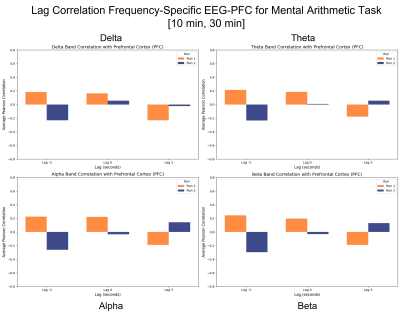 |
Computer Number: 57
3713. Effects
of Caffeine during Alert and Rest Conditions: An EEG-fMRI Study
L. Alqam, K. Yıldırım, K. Eren, E. Can, C. Karakuzu, B.
Tavashi, A. Dincer, P. Ozbay
Bogazici University, Istanbul, Turkey
Impact: The research findings will serve to improve our
comprehension of stimulants and impact public guidelines
about coffee consumption, in addition to facilitating the
development of personal recommendations to increase mental
performance and well-being.
|
|
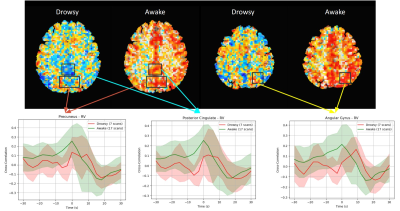 |
Computer Number: 58
3714. Impact
of Drowsiness on EEG-fMRI Dynamics and Physiological Responses
During Eyes-Open and Short Resting State Scans
K. YILDIRIM, L. Alqam, K. Eren, E. Can, C. Karakuzu, B.
Tavashi, A. Dincer, P. Ozbay
Bogazici University, Istanbul, Turkey
Impact: This study provides new insights into the
effects of drowsiness on brain-physiological interactions,
which could improve the interpretation of resting-state fMRI
scans in both research and clinical settings.
|
|
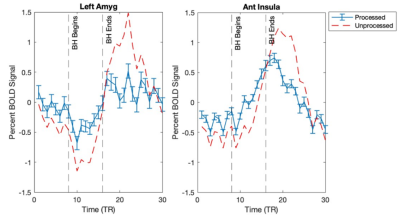 |
Computer Number: 59
3715. Assessing
central autonomic network function using a respiratory control
task
N. Churchill, A. Hadfield, L. Kasper, S. Graham, T.
Schweizer
St. Michael's Hospital, Toronto, Canada
Impact: This study assessed the viability of RTs in
measuring autonomic function and CAN-related activity. This
included assessments of task sensitivity and reliability,
which support the use of this paradigm to evaluate autonomic
function in healthy and clinical cohorts.
|
|
 |
Computer Number: 60
3716. Comparing
Strength and Functional Training: Effects on Cognitive
Performance and Brain Connectivity in Young Adults
A. Mohamed, N. Enriquez, H. Paterson, A. Qadi, B. Rokers, O.
Abdullah, K. Sreenivasan
New York University - Abu Dhabi, Abu Dhabi, United Arab Emirates
Impact: This study demonstrates that functional training
significantly enhances brain connectivity, suggesting
targeted exercise strategies for cognitive resilience. It
opens new avenues to explore how exercise-induced neural
changes support movement and memory, potentially informing
rehabilitation for cognitive and motor disorders.
|
|
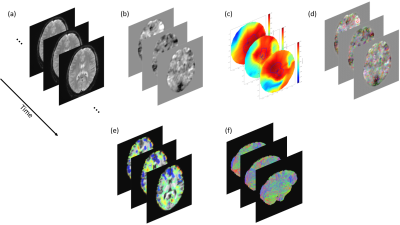 |
Computer Number: 61
3717. Characterizing
Spatiotemporal Resting-State fMRI Using Dynamic
High-Angular-Resolution Correlation Functions
S. Arabshahi, D. Novikov, A. Laine, Y. Lui
Columbia University, New York, United States
Impact: Our characterization method introduces a novel
approach for analyzing resting-state fMRI, offering valuable
insights for both research and clinical applications.
|
|
 |
Computer Number: 62
3718. Based
on rs-fMRI of the Gray Matter Structure and REHO of the Brain in
Two Chronic Hypoxia Modes
M. Zhong, J. Bu, X. Duan, Y. Xu
Guangzhou Red Cross Hospital, Guangzhou, China
Impact: For the first time to explore the brain's
responsiveness to low oxygen flow under physiological and
pathological conditions by fMRI. It provides a reference for
elucidating the mechanism of the effect of hypoxia on the
human body.
|
|
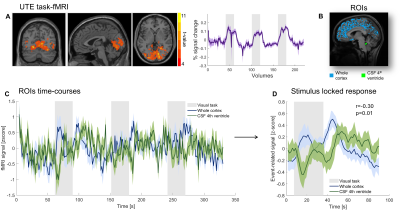 |
Computer Number: 63
3719. Functional
MRI with UTE to investigate stimulus-driven CSF flow
S. Ponticorvo, E. Paasonen, P. Filip, D. Rothman, J.
Valjakka, O. Gröhn, S. Michaeli, S. Mangia
University of Minnesota, Minneapolis, United States
Impact: Since UTE-fMRI signals are mediated by flow
dynamics, they enable determining the relationship between
blood-flow and CSF-flow more directly than BOLD. This
opportunity is critical for understanding how the brain
ensures global homeostasis during the demands of regional
activity.
|
|
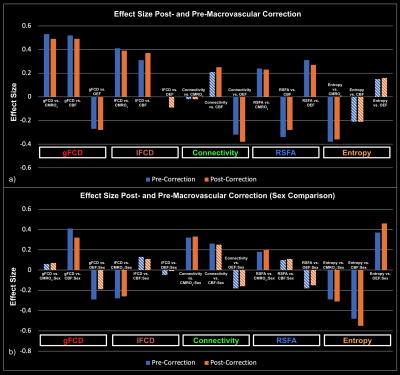 |
Computer Number: 64
3720. Mapping
the Link between Resting-State fMRI and Cerebral Oxidative
Metabolism
X. Zhong, H. Van Lankveld, J. J. Chen
University of Toronto, Toronto, Canada
Impact: rs-fMRI has limited clinical interpretability
due to its complicated nature. We improve the
interpretability of rs-fMRI by showing which metric is more
closely linked to cerebral metabolism and how links can be
enhanced by reducing the macrovascular bias in rs-fMRI.
|
The International Society for Magnetic Resonance in Medicine is accredited by the Accreditation Council for Continuing Medical Education to provide continuing medical education for physicians.